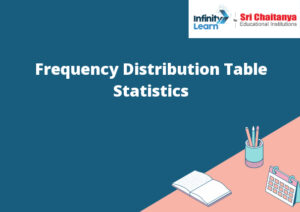Table of Contents
Frequency Distribution Table
A frequency distribution table is a table that shows how often a certain value or range of values occurs in a data set. It can be used to help identify any patterns in the data set.
The table will typically have two columns – the first column will list the values in the data set, and the second column will list the frequency of each value. The frequencies can be shown as percentages or as counts.
For example, imagine that you have a data set of test scores for a class of students. You could create a frequency distribution table that shows the score values and the frequency of each score.

Understanding the Frequency Distribution Table
The frequency distribution table is a table that organizes data into groups, or bins, and then calculates the frequency of data that falls into each bin. The table can be used to help identify patterns in the data and to help make decisions about how to group the data.
The first column of the table lists the bins, or groups, of data. The second column lists the frequency of data that falls into each bin. The third column is a cumulative frequency, which is the total frequency of data up to and including the given bin. The fourth column is the percentage of data that falls into each bin.
The frequency distribution table can be used to help identify patterns in the data. For example, in the table below, it is easy to see that the majority of the data falls into the bin range of 0-4. This information can be used to help decide how to group the data.
In the table below, the data is grouped into bins of 0-4, 5-9, 10-14, and 15+. The frequency of data that falls into each bin is then calculated. It can be seen that the majority of the data (66.7%) falls into the 0-4 bin. The second most common bin is the 5-9 bin, with 18.2% of the data. This information can be used to help decide how to group the data.
Ungrouped Data
Ungrouped data is a collection of data points that have not been organized into any specific pattern or structure. This type of data is often found in surveys or other forms of research, where individual responses are collected without any prior organization.
Ungrouped data can be difficult to work with, because there is no obvious way to analyze or interpret it. In order to make use of ungrouped data, it is often necessary to first organize it into a more structured format. This can be done by identifying any patterns or structures that exist within the data, and then organizing the data accordingly.
Student Marks
The marks of the students in a class are as follows:
85, 82, 85, 90, 84, 97, 90, 88, 95
Find the median.
The median is 85.
Grouped Data
A data set is said to be “grouped” when it can be divided into a number of smaller data sets, called “groups.”
In the example below, the data set is grouped by gender.
Male: 2, 4, 6
Female: 1, 3, 5
In the example below, the data set is grouped by age.
0-5 years: 1, 2, 3, 4, 5
6-10 years: 6, 7, 8, 9, 10
11-15 years: 11, 12, 13, 14, 15
16-20 years: 16, 17, 18, 19, 20
21-25 years: 21, 22, 23, 24, 25
Solved Example
Question
The table below shows the price of a new car at different times over a period of five years.
Year Price ($)
1 10,000
2 12,000
3 14,000
4 16,000
5 18,000
If the price of the car increases by $2,000 each year, what will be the price of the car in the fifth year?
The price of the car in the fifth year will be $22,000.
Student Marks
An instructor grades a student’s paper with the following marks:
A, A-, B+, B, B-, C+, C, C-, D+, D, D-
The student’s grade point average (GPA) would be:
3.67
Key Takeaways
1. The Ethereum network is a decentralized platform that allows for the creation of decentralized applications.
2. Ethereum is powered by the Ether token, which can be used to pay for goods and services on the network.
3. Ethereum is often compared to Bitcoin, as both networks are powered by blockchain technology.
4. Ethereum has a number of unique features that make it well-suited for decentralized applications.
5. Ethereum is still in development, and is not yet ready for mainstream use.








